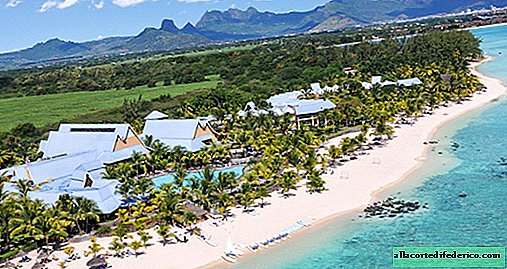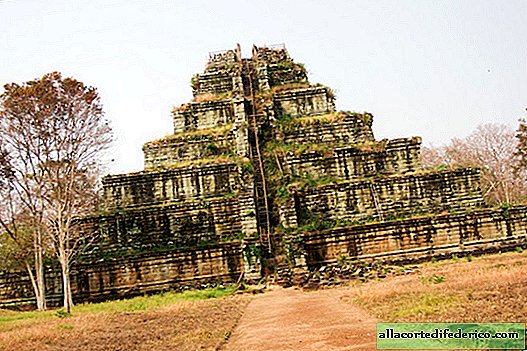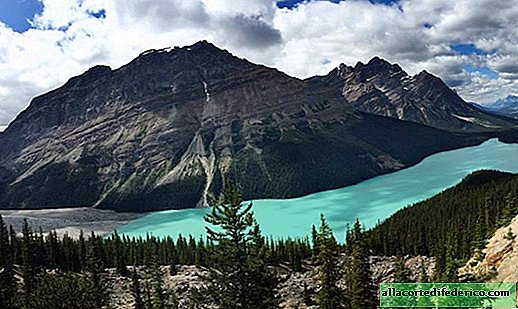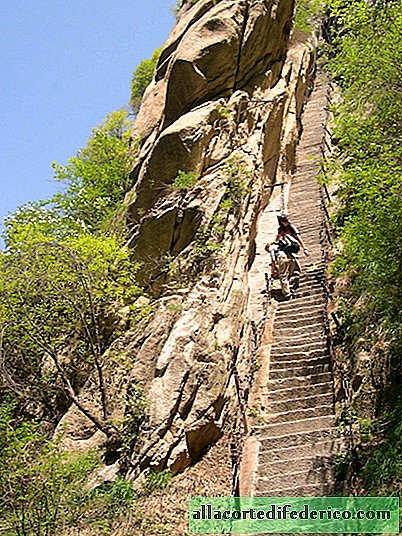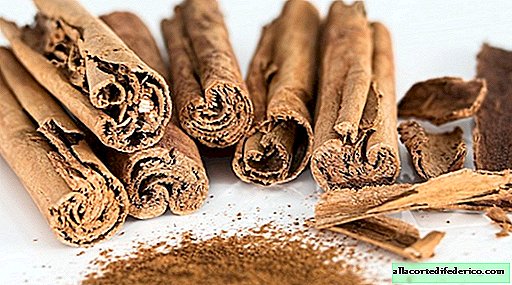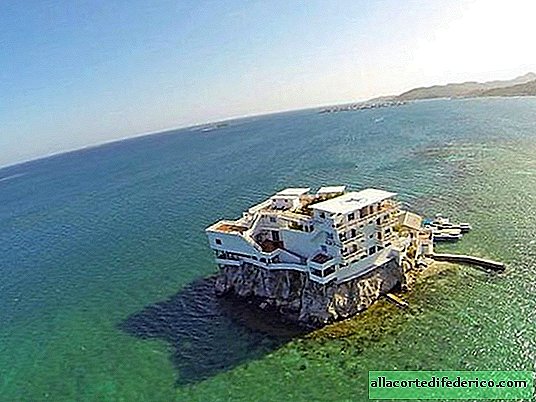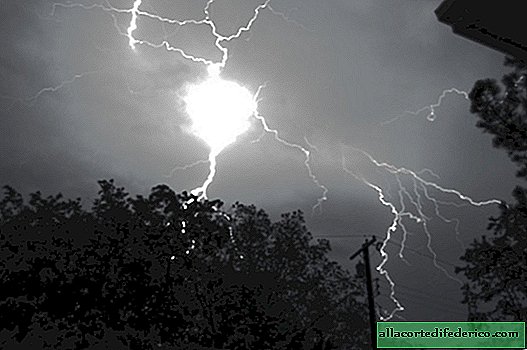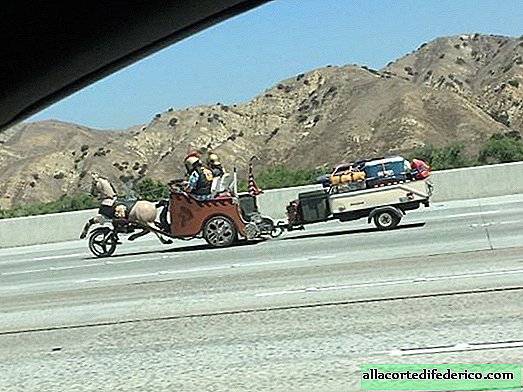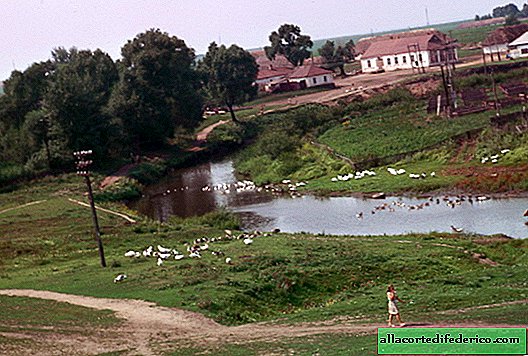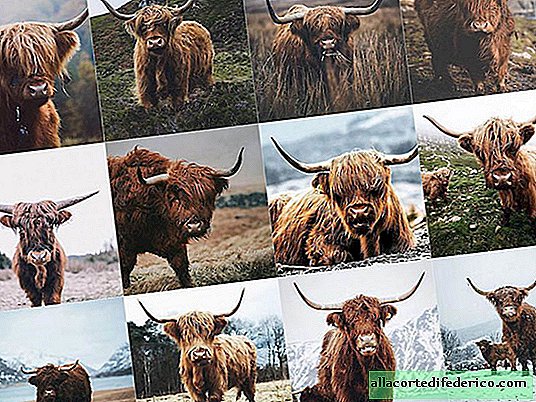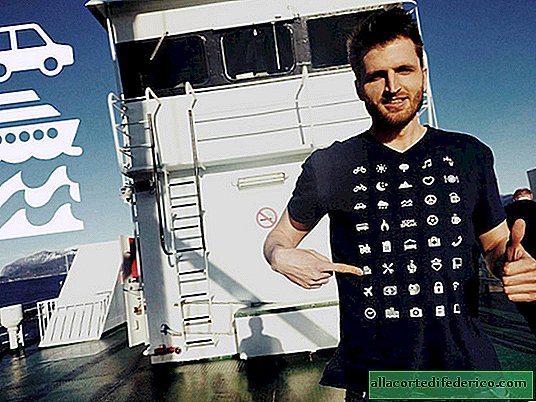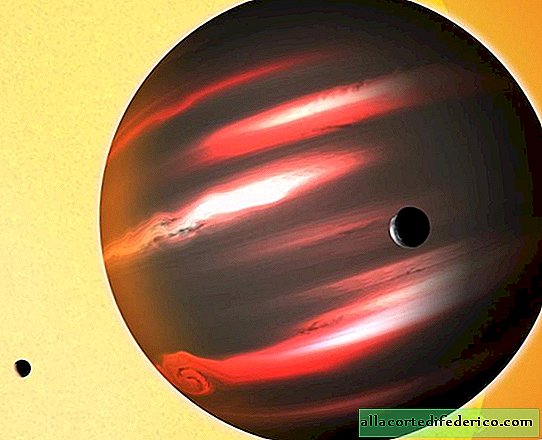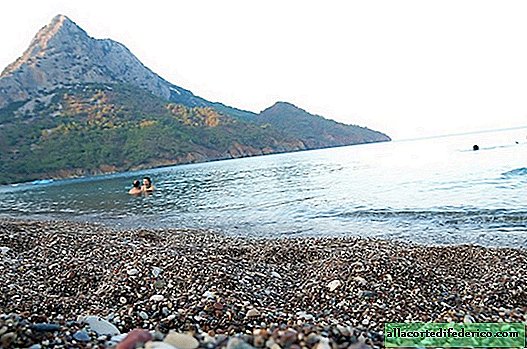Western Australia
If I had to choose to visit only one region of the country, perhaps I would stop at the immense Western Australia, which occupies a third of the mainland.
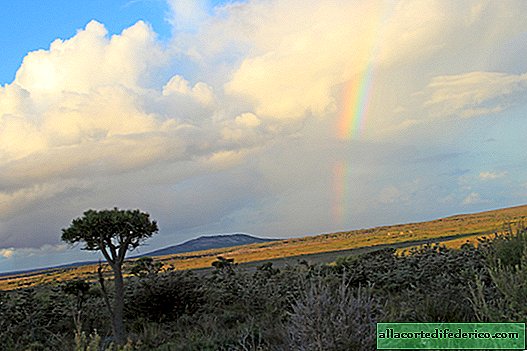
This is the largest state in the country, an ancient and sparsely populated region, which has preserved largely its pristine wildness. It is easy to imagine how Australia looked in the past, before the colonization of the continent. 
The bulk of the population lives in the vicinity of the capital and the only metropolis of Western Australia - Perth. The remaining cities are smaller and scattered over a vast territory. When traveling through remote areas of the state, you feel like a brave pioneer. The main attractions here are natural: countless beaches, ancient cliffs with imprints of prehistoric animals, fancy gorges, coral reefs, pink lakes, giant trees, rich fauna and flora. 
The state is not spoiled by mass tourism, because all the famous Australian cities are located on the opposite coast. But people, even once in the west of the mainland, will forever remember the beauty of this land. 
Officially, the state consists of the city of Perth and 9 regions. For a tourist, the following simplified division will be more convenient:
- Perth and surroundingswhere eighty percent of the state’s population lives.
- Golden Outback (Golden Outback) and Esperance - The harsh region of gold mining, the main city of which is Kalgoorlie; and blooming Esperance, surrounded by beautiful beaches and national parks.
- Southwest state - vineyards, forests with giant eucalyptus trees, caves and amazing beaches. The main cities here are: Bunbury, Mandurah, Margaret River, Albany, Denmark.
- Coral coast - A beautiful coastline with famous national parks, and, listed by UNESCO, the Shark Bay and Ningaloo Coast areas.
- Northwest state (Pilbara and Kimberly) is an impressive tropical region with unique natural wonders: colorful cliffs, quaint canyons, waterfalls, rivers and lakes. This is a very ancient land, here you can see the prints of dinosaurs and cave paintings of the first people of the continent. The Pilbara region is famous for the world's richest mineral deposits. Main cities: Newman, Karratha, Broome, Derby, Wyndham and Kununurra.
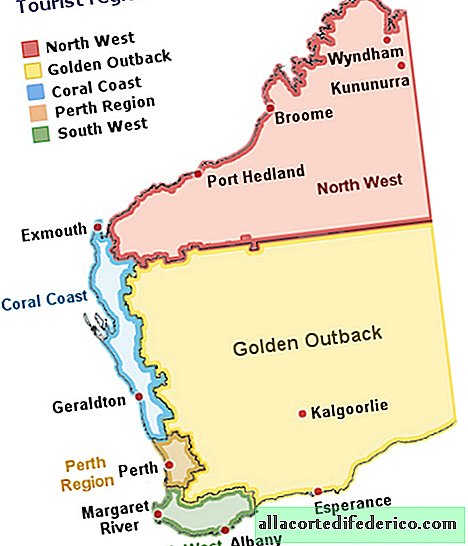
How to get there
Air travel is the only acceptable way to get to Western Australia from Russia. A waterway is theoretically possible, but only suitable for a small number of adventure lovers: it is very long and difficult to organize. From other states in Western Australia you can arrive at:
- by train
- the bus
- a car.
By the way, in addition to the quarantine regime common to the whole country, in Western Australia, due to the uniqueness of its fauna and flora, there is also its own quarantine with other states. There are checkpoints at airports, on the roads, and checks also take place on trains. Fruits, vegetables and bee products cannot be brought here.
By plane
The only international airport in Western Australia is Perth Airport. Learn more about options for flying to Perth in this article. The cost of a flight from Moscow ranges from 45 to 75 thousand rubles.
There are also small airports that accept domestic flights from other states in the cities of Broome, Kununurra, and Kalgoorlie. 
Broome can be reached from Darwin (Northern Territory) using Qantas and AirNorth. Round-trip ticket prices start at 450 USD (600 AUD). In the dry season, there are also direct Qantas flights from Sydney, Melbourne and Brisbane. The cost of a return ticket is about 985 - 1140 USD (1300-1500 AUD).
AirNorth flies to Kununarra from Darwin, tickets from 300 USD (400 AUD).
There are Virgin Australia flights from Melbourne to Kalgoorlie. Ticket price - about 600 USD (800 AUD).
Prices for flights depend on the season and often change. In most cases, the cheapest way is to fly through Perth. You can monitor prices here.
By train
A unique experience will be a trip from Sydney or Adelaide to Perth on a luxury train THE INDIAN PACIFIC. This is a rather expensive pleasure: the ticket price starts from 1260 USD (1669 AUD). You will comfortably cross a vast distance of 4352 km, along the way there will be excursion stops at Broken Hill and Kalgoorlie. You can book tickets on the Great Southern Rail website.
The train leaves from Sydney Main Station Central station (Eddy Ave, Haymarket NSW 2000) every Wednesday at 15.00 and arrives at Perth Station East perth train station (West Parade, East Perth, Western Australia 6004) Saturday at 15.00. From Perth to Sydney, the train leaves on Sundays at 10.00, arrival in Sydney on Wednesday at 11.30. 
By bus
Long distances make the bus an unsuitable transport in order to get to Western Australia.
Greyhound australia offers a bus line Darwin - Broome. However, this journey will take more than 24 hours and, as a rule, is not much cheaper than air travel on this route. The cost of a one-way ticket is about 230 USD (300 AUD). A comfortable bus departs once a day from Darwin Bus Interchange, the terminus of the route near the tourist information center in Broome. Flights are every day except Saturday. The current schedule is best checked on the official website.
By car
Traveling by car is a great way to see the country, unless, of course, you are ready for long journeys. 
There are 2 main roads connecting Western Australia with other states. Eyre highway allows you to get to Western Australia from Adelaide. Also, this route is convenient to travel from Sydney, Melbourne and other cities in South Australia, Victoria and New South Wales. The distances, of course, are huge: for example, the road from Sydney to Perth (3934 km) will take about 4-5 days. You will have to cross the famous desert Nullarbor plain (which in itself is quite an interesting experience).

In the north Victoria highwayturning into Great northern highway, connects Darwin (Northern Territory) with Broome (1871 km). The journey from Darwin to Perth (4039 km) will take approximately 5 days. And if you want to stop at sightseeing, the duration of the trip is difficult to predict. There are so many interesting places!

If you like adventure and have a reliable all-wheel drive car at your disposal, you can also get to Western Australia along the roads of the Australian outback. For example, road Great central road connects the city of Yulara (Northern Territory) and Laverton (Western Australia).

Most of the road is not asphalted, it passes through the lands of the natives, therefore, for travel, you need to get free permissions in advance at the Department of Indigenous Affairs.
By ferry
You can get to Western Australia on a cruise ship. Cruises in Western Australia are regularly organized from many Australian cities: Sydney, Melbourne, Brisbane, Darwin, Adelaide; as well as from New Zealand, Singapore and the UK.
The most popular state port is Fremantle) Cruise ships arrive at the Fremantle Passenger Terminal. Near the terminal there is a railway station (15-20 minutes walk) and bus stops that can deliver to the center of Perth. You can plan your route on the Transperth website. Free Fremantle Cat buses, which cover the entire historic center of Fremantle, also stop outside the terminal. You can get to Perth Airport using the myAirshuttle shuttle bus. 
When is the season? When is the best time to go?
To avoid confusion, I remind you that Australia is located in the southern hemisphere, and the seasons here are opposite to the seasons of the northern hemisphere: the Australian summer is December, January and February, the Australian winter is June, July, August. When autumn comes in Russia, spring comes in Australia, and vice versa.
Western Australia is huge, it is larger than Western Europe and includes several climatic zones. The climate of the southeast is Mediterranean: most of the precipitation falls in the winter months, and from November to March it is warm and dry. The middle of the state, remote from the sea - arid deserts; showers caused by cyclones mainly occur in summer. The northern tropical region is characterized by a monsoon climate, the rainy season falls on the Australian summer (from December to March), the heat and humidity go through the roof.
There is no definite answer when to go to Western Australia: in the Australian winter it will be good in the north of the state (there will be a dry season there), in the summer it is better in the south. Perth and surroundings can be visited at any time, but my favorite season here is spring or early fall.
Western Australia in the summer
The hottest season. The weather in Perth is sunny and dry. The average temperature is about +30 C, but the humidity is not high, so the heat is not so exhausting.
On the Coral coast, it is even warmer + 30-35 C. By the end of summer, in February it rains more and more often.
Moving further north, we find ourselves in even hotter areas, for example, the city of Marble Bar is considered one of the hottest places on the continent: a temperature of +45 C is not uncommon here. 
The northernmost region of the state, Kimberley, in the summer is unlikely to be comfortable: the sweltering heat and tropical showers, some places may not be accessible for visiting due to floods.
But you will definitely like it in the southwest. In summer, here, as a rule, a pleasant temperature of +25 C is held, this is an ideal time to visit the area. In the desert region of the state remote from the sea, temperatures can fluctuate: high daytime temperatures are often combined with cool nights.
Western Australia in the fall
The beginning of autumn is a good time for a beach holiday in Perth. The water is still very warm, and the air gets a little cooler. 
By the end of autumn, it rains more and more often. The air temperature gradually decreases to 20 - 23C.
In the south of the state it can be even colder, rains and cloudy days are not rare.
But in the north, the weather, on the contrary, is becoming more pleasant. The end of April / May is the beginning of the dry season. It's still hot here - 30-32 C, but less and less rain.
Western Australia in spring
Spring in Western Australia is a bush wild season. This beautiful phenomenon is observed in different places: in the vicinity of Perth (by the way, in the city itself flowering can be seen in the botanical gardens of Kings Park), in the south of the Coral coast, as well as in the southwest and in the Esperance area. 
In the north of the state, starting in October, it is getting hotter. In November, the temperature rises to 40 C and higher, and humidity also rises. Many hotels provide good discounts, however, to explore the natural beauty in such weather is not at all simple.
Western Australia in winter
The Australian winter (June to August) in Perth is mild and relatively sunny, but rains with thunderstorms are not uncommon this season. Air temperature is 8-19 C. 
The south is also cool. The temperature can drop to 8 - 16 C. On the Stirling ridge, sometimes even snow falls (though it usually holds for a very short time).
Winter is the best season to visit the north of Western Australia: it is dry and sunny, daytime temperatures are + 27-29 C. In addition, in June the land blooms after a fertile rainy season.
What are the prices for holidays?
Western Australia is rich in minerals. Here they mine gold, opals, diamonds, iron and aluminum ore, oil and gas and much more. The income level of the population is quite high, unfortunately, the same can be said about prices.
Accommodation
In the state capital, the range of prices for hotels is quite large: 85 - 150 USD (110-200 AUD). In small towns of Western Australia you can stay cheaper: from 49-53 USD (65-70 AUD), but it is better to book in advance, as the choice of hotels is small. Other options: numerous campsites in national parks, which usually cost from 5.5 - 14.5 USD (7.5 to 19 AUD) per person; caravan parks; as well as “road house” - roadside motels.
Food
A dinner in a pub for two people on average costs about 45 USD (60 AUD), you will have to spend at least 75 USD (100 AUD) on a decent restaurant. Lunch is cheaper: 9-15 USD (12-20 AUD). Do not be afraid of fast food. I especially like fish & chips from local fresh fish. Also, in many places special barbecue areas are equipped, for example, you can buy food at one of the farmer's markets and cook it yourself.
Directions
In the state capital, public transport is well developed. The fare is not cheap, but you can save money by using the CAT free bus system, which serves all the central places in Perth.
Sights
Some national parks charge an entry fee of 9 USD (12 AUD) on average for a passenger car. In addition, you can purchase a Holiday Pass for 33.5 USD (44 AUD), which will provide unlimited visits to all parks within one month.
The main attractions. What to watch
The bulk of tourists begins acquaintance with Western Australia, once in its capital - Perth. It is a pleasant city that can offer a varied vacation. However, the main attractions of the state are outside the cities. People come here to see the untouched nature, numerous national parks, beautiful beaches, islands, unique fauna and flora. When planning a trip, you need to consider huge distances and not try to embrace the vast.
Top 5
- State Capital - Perth and his companion Fremantle. Read more about the sunniest city in Australia here.
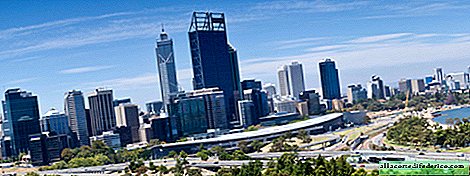
- Rottnest island - I will talk about this famous island of Western Australia in the vicinity of Perth in the corresponding section.
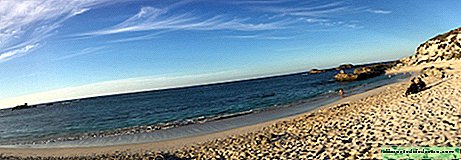
- Wave rock - an amazing rock near the town of Hyden, resembling a giant wave frozen in stone.
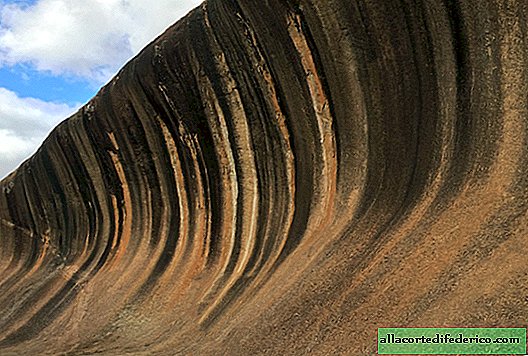 Its height is 15 meters and its length is 110 meters. This natural wonder came about as a result of weathering and rain erosion of the huge Hyden Rock, which is about 2700 million years old.
Its height is 15 meters and its length is 110 meters. This natural wonder came about as a result of weathering and rain erosion of the huge Hyden Rock, which is about 2700 million years old.  Entering Wave Rock territory costs 7.7 USD (10 AUD) from a car. You can climb a rock, and then it becomes clear that it is only part of a much larger rock formation. There are many hiking trails around Wave Rock: I suggest taking a walk to the fun rock Hippo's Yawn (Hippo Yawn).
Entering Wave Rock territory costs 7.7 USD (10 AUD) from a car. You can climb a rock, and then it becomes clear that it is only part of a much larger rock formation. There are many hiking trails around Wave Rock: I suggest taking a walk to the fun rock Hippo's Yawn (Hippo Yawn). 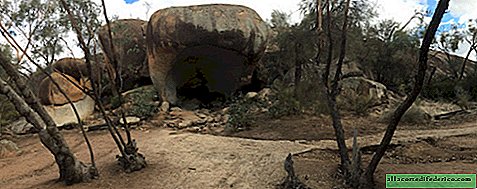 About 15-20 minutes away, there is also Mulka's Cave, a small cave where you can see Aboriginal rock paintings.
About 15-20 minutes away, there is also Mulka's Cave, a small cave where you can see Aboriginal rock paintings. - Ningaloo Reef. Probably the majority of people who are fond of travel have heard about the Great Barrier Reef, but Ningalu Reef, a UNESCO site, is visited much less frequently. And this is wonderful! A small tourist stream allows you to save a unique marine ecosystem with a length of more than 250 km. This is one of the world's largest coral reefs, which is located in close proximity to the coast (the distance from the coast in some places is only 100 meters). You do not need to book an expensive tour, it is easy to swim to the reef from the beach!
 I will not describe all its countless inhabitants, I will name only the main tourist lure: from April to July you can swim here with the largest fish on earth - the whale shark. It does not pose a danger to humans, as it eats only plankton and small fish.
I will not describe all its countless inhabitants, I will name only the main tourist lure: from April to July you can swim here with the largest fish on earth - the whale shark. It does not pose a danger to humans, as it eats only plankton and small fish. - Kimberly - the most impressive area in Western Australia: blood-red earth, ancient cliffs with primitive drawings, deep gorges, rivers that spill over many kilometers during the rainy season, waterfalls and gorgeous beaches. The landscapes of those places cannot be forgotten. This is one of the wildest and most mysterious places in the country.
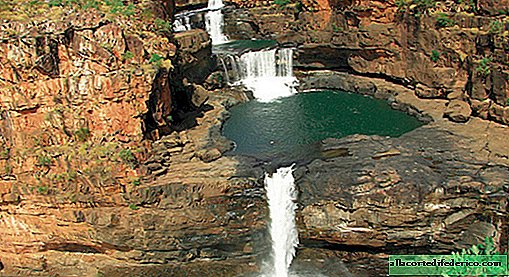
Beaches. Which are better
Western Australia boasts a huge number of excellent beaches, it is very difficult to choose the best places. I will list my favorites: 

- Lucky Bay. Good Luck in the Cape Le Grand National Park, with its white sand and crystal water, has repeatedly topped the lists of the country's best beaches.
 The sand here is so small and clean that it makes a funny creak when you walk on it. An amazing feeling ... There are few people, but kangaroos often go to the beach. The beach is wild, there is no tourist infrastructure here. The entrance to the water is shallow and sandy. Swimming here is a pleasure. You can only get by car. The nearest town is Esperance, 62 km away.
The sand here is so small and clean that it makes a funny creak when you walk on it. An amazing feeling ... There are few people, but kangaroos often go to the beach. The beach is wild, there is no tourist infrastructure here. The entrance to the water is shallow and sandy. Swimming here is a pleasure. You can only get by car. The nearest town is Esperance, 62 km away. 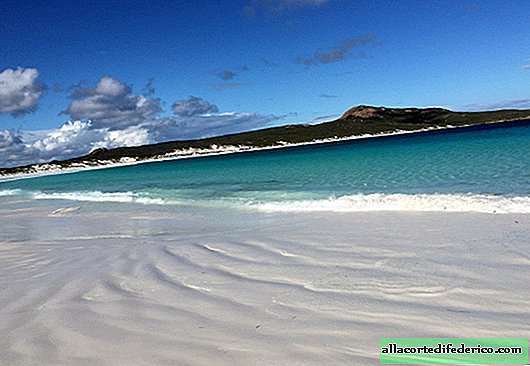
- Twilight beach - Another beautiful southern beach in the city of Albany. Its highlight is a rock resembling the skeleton of a giant prehistoric animal. In the vicinity of the beach there is all the necessary infrastructure. The beach is suitable for a relaxing holiday.
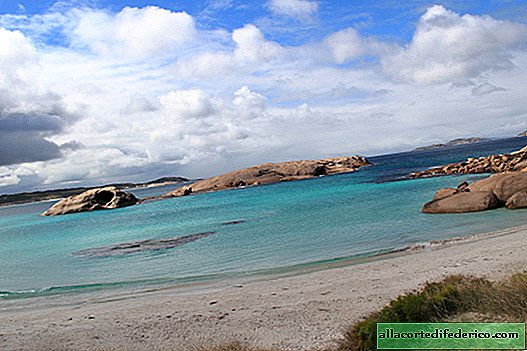
- Greens pool - A cozy place near the city of Denmark with a scattering of picturesque cliffs that protect the beach from ocean waves. Nature has created a kind of natural pool here, where you can swim regardless of the mood of the ocean. There are practically no waves, and the entry into the water is sandy and convenient.
 In addition to crystal water, the beach can offer walks through bizarre cliffs and rock tunnels. Be sure to get to Elephant Rocks, stones that look like a group of elephants refreshing their bodies in the cool water of the bay.
In addition to crystal water, the beach can offer walks through bizarre cliffs and rock tunnels. Be sure to get to Elephant Rocks, stones that look like a group of elephants refreshing their bodies in the cool water of the bay. 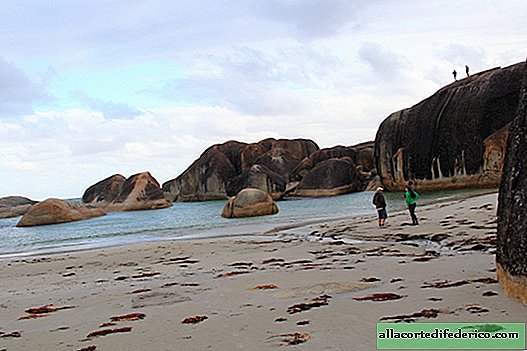
- The beaches of Rottnest Island. This beautiful island has about 80 beaches. Popular places: Pinky Beach, The Basin, Little Parakeet Bay, Little Salmon Bay, Geordie Bay. Cars are not allowed here, so I recommend renting a bike, and after exploring the surroundings, choose your favorite beach. The sandy beaches of the island are ideal for the whole family. Take along drinks and food for a picnic, shops and sources of drinking water are far from everywhere.
- Monkey Mia. This beach is famous for its colony of friendly dolphins, who sail almost daily and are not averse to chatting with people. This is a unique opportunity to see these wonderful creatures in natural conditions. Dolphins appear up to three times a day, usually in the morning from 7.30 to 12.00, during this period, the rangers feed them. Dolphins live free, but they are closely watched, each of them has its own name. They are distinguished by fins. Many years of research have allowed scientists to even compose a dolphin genealogy and trace family ties. Entrance to Monkey Mia Conservation Park costs 12 AUD for an adult, 4.5 AUD for a child, family ticket (2 adults, 2 children) - 28.5 AUD.
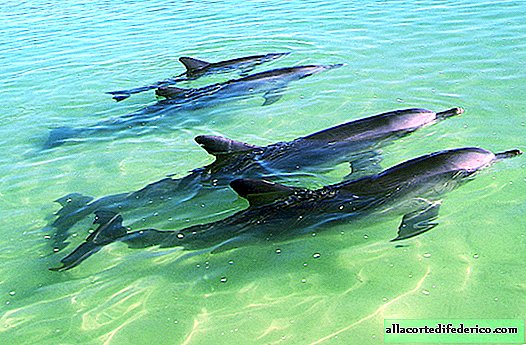
- Shell Beach. This snow-white 60-kilometer beach in Shark Bay is unique in that it does not consist of sand or stones, but of countless small shells. Their layer goes into the ground for 7-10 meters. The spectacle is truly incredible.
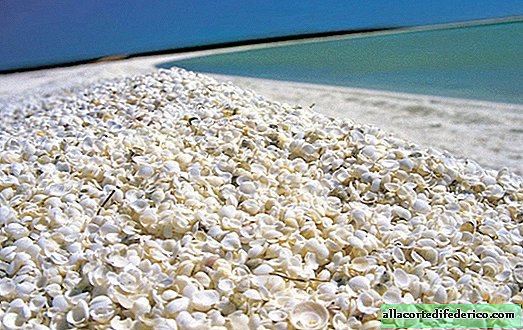 In the past, before this area received the status of a national park, whole blocks of pressed shells were extracted from the depths of the beach for the construction of buildings in the neighboring town of Denham. This material is called coquina.
In the past, before this area received the status of a national park, whole blocks of pressed shells were extracted from the depths of the beach for the construction of buildings in the neighboring town of Denham. This material is called coquina. - Turquoise bay - Turquoise Gulf ... Azure waters, white sand and proximity to the Ningalu coral reef allow this beach to enter the list of the best places for swimming in Australia. The beach is 63 km from the city of Exmouth. Here you can relax and swim, and, of course, many people come here for snorkeling and diving.
- Cable beach - A 22-kilometer beach in the north of the state near the city of Broome. The ocean in this place is transparent and calm. The beach owes its original name, laid here in 1889, to the underwater telegraph line that connected Australia and Indonesia. The main tourist attraction of the beach these days is camel riding, it is especially popular to do it at sunset.
 The cost of such entertainment is 42-70 USD. And if you don’t like to ride camels (sometimes it happens!) Or just feel sorry for the money, you can absolutely free to watch and photograph people who do not mind doing it. The beach has several excellent bars, a surf club and all the necessary infrastructure.
The cost of such entertainment is 42-70 USD. And if you don’t like to ride camels (sometimes it happens!) Or just feel sorry for the money, you can absolutely free to watch and photograph people who do not mind doing it. The beach has several excellent bars, a surf club and all the necessary infrastructure.
Churches and temples. Which are worth a visit
The main religion of the state is Christianity. Of course, Western Australia does not go for religious architecture; local churches can hardly be called “must see” attractions in the region. And yet, if you are nearby, you can visit the following places:
- Perth Cathedrals: St mary's cathedral and St george's cathedral. You can read more about them here.
- New Norcia Monastery. New Norcia is Australia's only monastery city, founded in 1847 by Spanish Benedictine monks. The monastery is valid until our time. In this small village you can admire the Spanish architecture, which is not typical for Australia, try the products grown and prepared by the monks, as well as visit church services. They are held daily at the Abbey Church (Monday - Saturday - 7.30; Sunday - 9.00, 17.30) and the Monastery Chapel (Monday - Saturday - 5.15, 6.45, 12.00, 14.35, 18.30, 20.15; Sunday - 6.00, 12.00, 19.35).

- The all saints church, Henley Brook. This is the oldest church in Western Australia, founded in 1838 on the site of Captain James Stirling's camp. It is surrounded by an old cemetery. The visit is free, but a small donation is welcome. On Sundays, a service is held in the church.
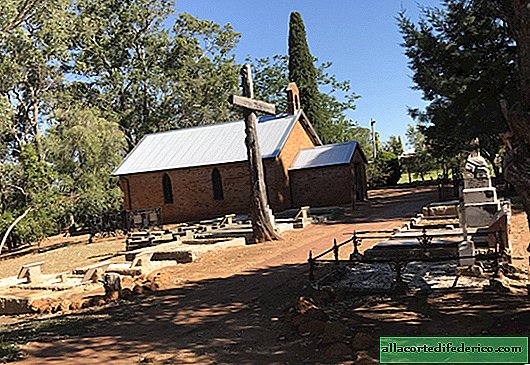
- St francis xavier cathedral, Geraldton - a cathedral opened in 1938, is interesting for its impressive facade and cheerful striped interior.
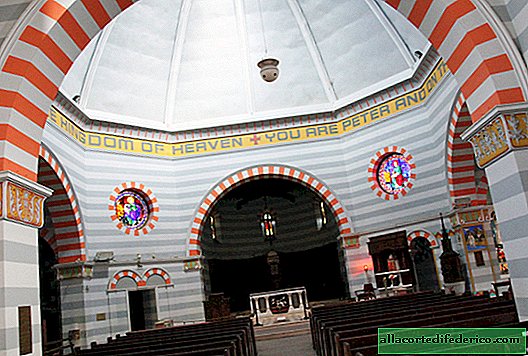
Museums Which are worth a visit
There are museums and art galleries in many cities in Western Australia. I will mention only a few of the most famous places:
- Museums of the state capital, the city of Perth and its companion Fremantle, which can be found in more detail here.
- Museum of the goldfieldsKalgoorlie (17 Hannan St, Kalgoorlie WA 6430). The museum tells about the harsh history of gold mining and introduces the life of mining families in this region. Opening hours: 10.00 - 15.00. Admission is free, but a donation of $ 3.8 (5 AUD) is recommended.
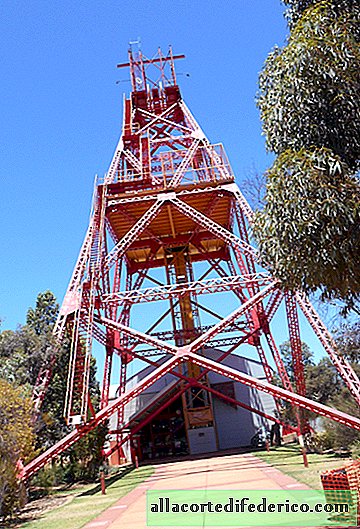
- Hannans north tourist Mine, (130 Goldfields Hwy, Hannans WA 6430). This is one of the oldest gold mines in Kalgoorlie, open to tourists. Opening hours: Sunday to Friday from 9.00 to 16.00, the last entrance is 15.30. An average mine inspection will take an hour and a half. Adult ticket - 10 USD (13 AUD), child ticket (from 5 to 15 years old) - 5.3 USD (7 AUD).
- Museum of the great southern, (Residency Rd, Albany WA 6330). Museum of Local Lore in the oldest city in the state - Albany. The museum's collection contains historical and natural artifacts; here you can also learn about the culture of the local indigenous people - the Noongar tribe. Opening hours: 11.00 - 16.00, on Wednesday: 13.00-19.00. Admission is free, a donation of $ 3.8 (5 AUD) is recommended.
- Museum of Geraldton, (2 Museum Pl, Geraldton WA 6530). This is also a museum of local lore, which preserves the natural, historical and cultural heritage of the region. The museum is open from 9.30 to 15.00. Admission is free, but, as in other similar places, it is recommended to make a donation of $ 3.8 (5 AUD).
Parks
Numerous national parks are the main treasure of the state. Unfortunately, most of them can be viewed only with a car. Another option is to book a tour at a travel agency. 

- Cape le grand national park. Here is already mentioned by me, one of the best beaches in Australia, Lucky Bay, as well as other attractive beaches. In addition, a climb to the 262-meter Frenchman's Peak Mountain, which offers a beautiful panorama, will be an unforgettable experience.
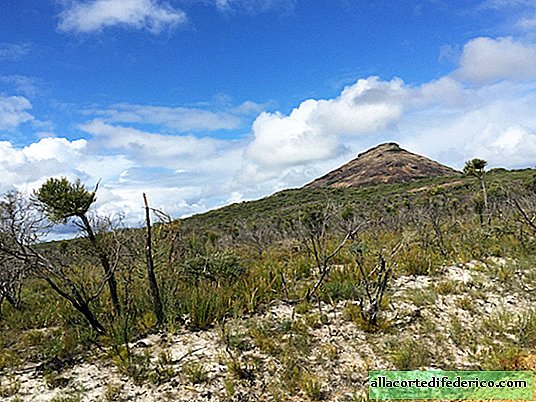 The climb is not very steep, but comfortable and non-slip shoes are needed. You cannot climb in rainy weather, as the slope becomes too slippery.
The climb is not very steep, but comfortable and non-slip shoes are needed. You cannot climb in rainy weather, as the slope becomes too slippery. - Walpole-nornalup national park boasts a place called Valley of the giants: Valley of the Giants. Some of the tallest trees in the world grow here - multi-colored eucalyptus trees.
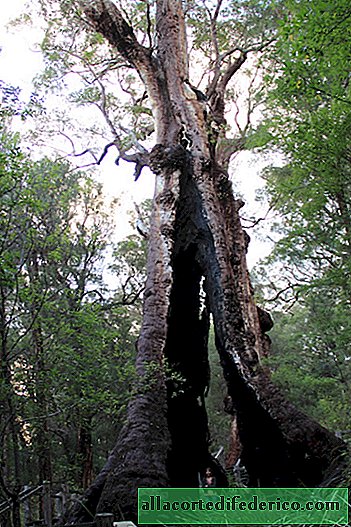 Visitors can walk along the paths and admire these ancient giants. Some trees are over four hundred years old! One of the routes is poetically called The Ancient empires walk. If you are tired of raising your head, I recommend Tree top walk - a walk at a height of forty meters above the ground on specially constructed platforms, allowing you to take a closer look at the crowns of trees.
Visitors can walk along the paths and admire these ancient giants. Some trees are over four hundred years old! One of the routes is poetically called The Ancient empires walk. If you are tired of raising your head, I recommend Tree top walk - a walk at a height of forty meters above the ground on specially constructed platforms, allowing you to take a closer look at the crowns of trees. 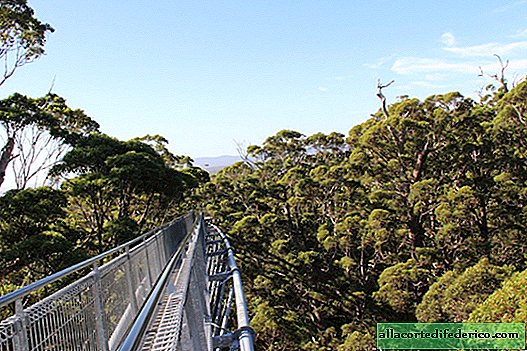 Opening hours of Tree Top Walk: 9.00 - 17.00, tickets finish selling at 16.15. Adult ticket - 16 USD (21 AUD), child ticket (6-15 years old) - 7.6 USD (10.50 AUD), family ticket (2 adults, 2 children) - 40 USD (52.50 AUD).
Opening hours of Tree Top Walk: 9.00 - 17.00, tickets finish selling at 16.15. Adult ticket - 16 USD (21 AUD), child ticket (6-15 years old) - 7.6 USD (10.50 AUD), family ticket (2 adults, 2 children) - 40 USD (52.50 AUD). - Stirling range national park covers a large territory. Here is one of the highest peaks in the state. Bluff knoll is the only place in Western Australia where snow falls in winter. Mountain lovers can climb Bluff knoll (6 km, 3-4 hours, including descent), Toolbrunup peak (4 km, 3-4 hours, including descent) or to other peaks of the ridge. To do this, it is better to stay at the campsite for a couple of days.
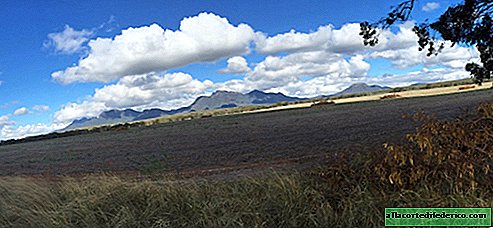
- Porongurup National Park. A beautiful national park with many hiking trails. Here you will see the famous balancing stone - Balancing rock.
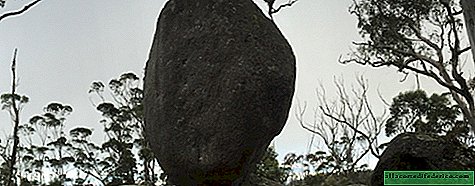 Going further through the eucalyptus forest and climbing the steps driven into the rock, you will find yourself on Granite skywalk - a walking platform on top of the highest cliff of the park Castle rock.
Going further through the eucalyptus forest and climbing the steps driven into the rock, you will find yourself on Granite skywalk - a walking platform on top of the highest cliff of the park Castle rock. 
- Nambung national park. The main attraction here is the famous desert The pinnacles. It is dotted with many bright yellow limestone cliffs of an unusual shape, similar to turrets or fingers aimed at the sky. Once here, you feel on another planet. Best time to visit: sunrise or sunset.

- Kalbarri National Park. Hiking trails lead you through the colorful, colorful canyons of the Murchison River, formed about 400 million years ago.
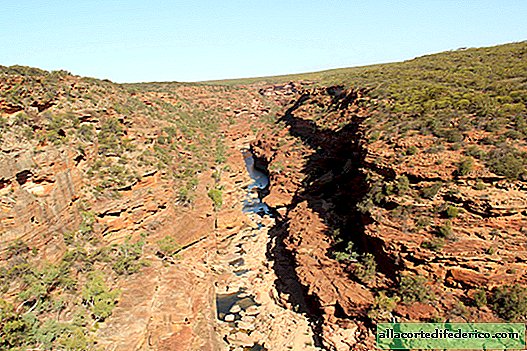 There are many beautiful observation platforms. Perhaps the most popular place is Natures window. This natural window in the rock acts as a wonderful frame for the surrounding landscape. Walking in the park, do not forget to look at your feet. On these ancient rocks there were prints of prehistoric animals!
There are many beautiful observation platforms. Perhaps the most popular place is Natures window. This natural window in the rock acts as a wonderful frame for the surrounding landscape. Walking in the park, do not forget to look at your feet. On these ancient rocks there were prints of prehistoric animals! 
- Shark Bay World Heritage Area - Shark Bay is listed by UNESCO due to its unique flora and fauna. Here you can observe dugongs, dolphins, sharks, stingrays, turtles and many other rarer species. Tourists will be interested in the already mentioned beaches. Monkey mia and Shell beach, as well as Hamelin Pool Marine Nature Reserve.
- Mount augustus national park notable for a giant rock of crystalline rocks, rising 860 meters in the middle of a vast plain.
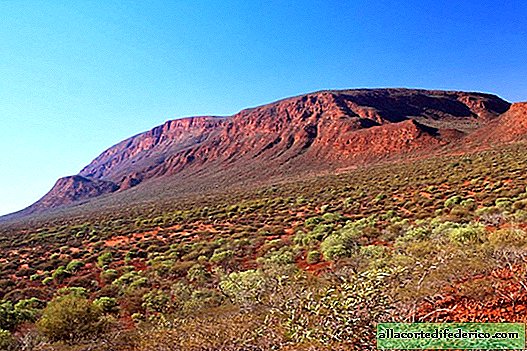 Such geological formations are called "Inzelberg" - an island mountain. This is the less famous, but no less impressive brother of the famous Uluru. By the way, Mount Augustus even surpasses Ulur in size. According to scientists, Mount Augustus formed 900 million years ago. Please note that the roads in the vicinity of the national park are unpaved. The park is 465 km from the city of Carnarvon, only a section of the road is paved 172 km from Carnarvon to Gascoyne Junction.
Such geological formations are called "Inzelberg" - an island mountain. This is the less famous, but no less impressive brother of the famous Uluru. By the way, Mount Augustus even surpasses Ulur in size. According to scientists, Mount Augustus formed 900 million years ago. Please note that the roads in the vicinity of the national park are unpaved. The park is 465 km from the city of Carnarvon, only a section of the road is paved 172 km from Carnarvon to Gascoyne Junction. - Karijini national park - One of the largest national parks in the state with picturesque gorges, stone tunnels, waterfalls and crystal clear rocky lakes.
 According to scientists, the rocks of the park are more than 2 billion years old. This is the original territory of the tribes of Banjima, Innawongka and Eastern Guruma. Visitors can access the northern part of the park, there are many hiking trails. One of the best viewing platforms - Oxer lookout. In the territory of the park is the highest mountain in Western Australia - Mount meharry (1,249 meters).
According to scientists, the rocks of the park are more than 2 billion years old. This is the original territory of the tribes of Banjima, Innawongka and Eastern Guruma. Visitors can access the northern part of the park, there are many hiking trails. One of the best viewing platforms - Oxer lookout. In the territory of the park is the highest mountain in Western Australia - Mount meharry (1,249 meters). - Purnululu national park is a UNESCO World Heritage National Park in the east of the Kimberley region. The main attraction of this place is the mountain range Bungle bungle with cone-shaped rocks in black and orange stripes. Rocks are composed of layers of sandstone, which have different permeability, which explains their unique coloring. The orange layers are worse permeable to water and contain oxides of manganese and iron.
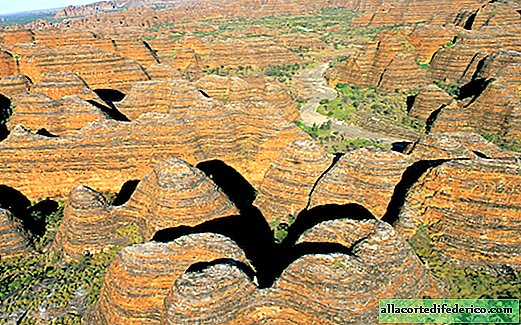
Neighboring Regions
Northern territory
The northern territory is another sparsely populated state of the country with many natural attractions. The most popular places are the city of Darwin, the largest national park in Australia - Kakadu National Park and, of course, the legendary rock Uluru (Ayers Rock). 
South australia
Another neighbor of Western Australia, South Australia, attracts tourists with its beaches, famous wines and the vibrant capital of Adelaide. 
Christmas island
This island, having the status of the country's external territory, is closer to Indonesia than to Australia. It is 350 km from Java and 1,550 km from the coast of Western Australia. 63% of the island is occupied by a national park, notable for its tropical forests and many caves. You can get here on a rather expensive Virgin Australia flight from Perth, about 770 USD (1000 AUD) there and back. 
Nearby islands
There are many islands scattered across the ocean surrounding western Australia. I will tell only about the most visited places by tourists: 
- Rottnest island famous for its white beaches and the largest population of kvokk in the wild. Kvokka is a charming little animal belonging to the kangaroo family. Quokki are not particularly afraid of people and, once on the island, you can see them from close range. Touching these cute babies is not allowed. You can stay on the island for a few days, staying in one of the hotels or campsites. Cars are prohibited here. Bike rental is available. Also, a tourist bus runs regularly, although not very often, around the island. It is easy to get here by ferry from Perth or Fremantle.
- Recherche archipelago - A group of islands in the south of the state near the city of Esperance. On the largest island of Middle Island is the famous bright pink lake Hillier.
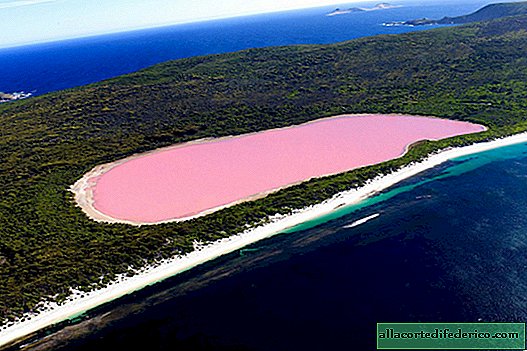 Scientists suggest that its color is caused by special bacteria living in salt water. The lake does not change color all year round. You can admire this beauty from the air by booking a flight at Esperance Air Services.
Scientists suggest that its color is caused by special bacteria living in salt water. The lake does not change color all year round. You can admire this beauty from the air by booking a flight at Esperance Air Services. - Houtman abrolhos or Abrolhos islands - This is 122 coral atolls 80 km from the city of Geraldton. Here you can fish, watch birds and marine life, as well as engage in snorkeling and diving.
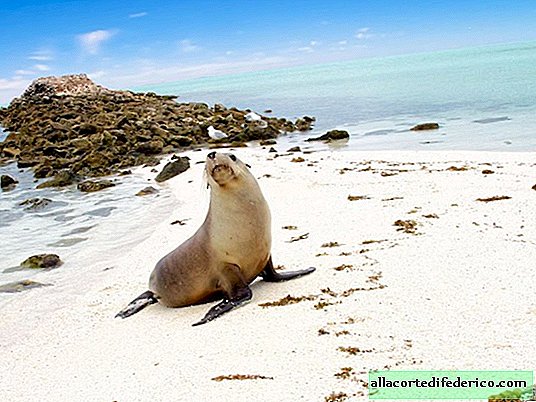 In addition to coral underwater, there are debris of wrecked ships. At this place the legendary shipwreck of the Dutch ship "Batavia". You can explore the islands by joining the day tours from the city of Geraldton. Tourists are not allowed to spend the night on the islands.
In addition to coral underwater, there are debris of wrecked ships. At this place the legendary shipwreck of the Dutch ship "Batavia". You can explore the islands by joining the day tours from the city of Geraldton. Tourists are not allowed to spend the night on the islands. - Dirk hartog island - The historical value of this place is that in 1616, long before the official opening of Australia by James Cook, the Dutch captain Dirk Hartog first set foot on Australian soil here. Now the island provides excellent conditions for ecotourism. Here you can swim, fish (the fishing here, by the way, is simply magnificent), snorkel and ride along the sand dunes. You can get from the neighboring town of Denham. On the island there are conditions for the overnight stay of a large number of tourists.
- Montebello islands - 265 islands and 58 hectares of sea paradise for fishermen and divers. From May to September, Northwest, Primrose, Crocus, Bluebell, Renewal and Hermite Islands can pitch a tent for a maximum of 5 nights.
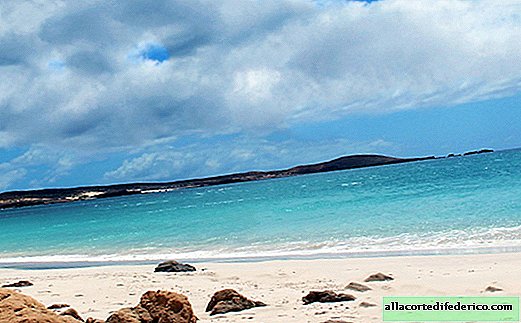 In other months, accommodation is prohibited due to the nesting season of turtles. A sad page in history: tests of British atomic weapons in 1952 and 1956 on the islands of Hermite (there was a command post), Trimouille and Alpha. Since that time, nature has healed wounds and the level of radiation has returned to almost normal values. However, it is not recommended to stay in the test areas to be marked for more than 1 hour a day, touch the ground and, especially, grab any items as souvenirs.
In other months, accommodation is prohibited due to the nesting season of turtles. A sad page in history: tests of British atomic weapons in 1952 and 1956 on the islands of Hermite (there was a command post), Trimouille and Alpha. Since that time, nature has healed wounds and the level of radiation has returned to almost normal values. However, it is not recommended to stay in the test areas to be marked for more than 1 hour a day, touch the ground and, especially, grab any items as souvenirs. - Buccaneer archipelago - More than 1000 small islands form this archipelago in the northwest of the state. The most popular attraction here is the so-called horizontal waterfalls in Talbot Bay.
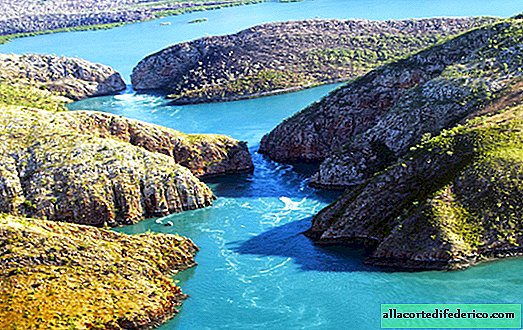 In fact, these are tidal waves that, under great pressure, pass through the narrow crevices in the Mc'Larty Range mountain range, forming seething waterfalls up to 10 meters high. At low tide, the same thing happens, just the direction of the waterfalls changes. It is best to observe this natural wonder from the air. Air tours are organized in the cities of Broome and Derby.
In fact, these are tidal waves that, under great pressure, pass through the narrow crevices in the Mc'Larty Range mountain range, forming seething waterfalls up to 10 meters high. At low tide, the same thing happens, just the direction of the waterfalls changes. It is best to observe this natural wonder from the air. Air tours are organized in the cities of Broome and Derby.
Food. What to try
Western Australia is perhaps the best place in the country to enjoy seafood and fish. Lobsters, crabs, octopuses, squids, shrimps, fish of all varieties and sizes ... The choice is huge. In the south of the state, try trout, giant freshwater crayfish Marron or their smaller Yabby brothers; Mandurah is famous for crabs, delicious scallops await you on the island of Rottnest, in the city of Geraldton try lobsters; shrimps, shellfish, barramundi fish, coral salmon, snapper and much more are great in the north of the state. 
The south of Western Australia is famous for its winemaking traditions (Semillon, Sauvignon blanc, Chenin blanc, Verdello, Shiraz), the production of cheese and chocolate. Another local delicacy is black truffles. There are many small breweries around Perth. And I also really like local coffee houses, the cappuccino is excellent here! One cannot fail to note the rich selection of fruits from which wonderful fresh juices and smoothies are prepared.
Mentality features
During the development of the mainland by Europeans, the vast territories of the state developed a solid and independent character in its inhabitants. Western Australia is the only state that tried to leave the federation by voting for separation in 1933, but this was not destined to materialize. Separatist sentiments are now in the past.
People in Western Australia are generally friendly, open to communication and willing to help tourists in case of any difficulties (the word mutual assistance here is not an empty phrase). They love their land and are proud of it. Here it is customary to respect nature and wildlife. So, in the city, I have repeatedly noticed touching ads on trees: "Thank you for watching over me! If they hurt me, call this number ..." 
Holidays
Western Australia celebrates all Australian national holidays as well as Western Australia Day (Western Australia Day), which falls on the first Monday of June. In 2017, it will be June 5th.
Also, unlike other states, Queen's Birthday they celebrate here at the end of September, and Labor Day - March, 6.
Along with official holidays, each state region has its own events and festivals:
- Perth international arts festival (February - March) - the annual festival of art in Perth;
- Fremantle festival (October - November) - a colorful festival in Fremantle;
- Drug Aware Margaret River Pro (March - April) - international competition of surfers in the Margaret River;
- Beach polo competitions in Broome (May);
- TropiCOOL Festival - a music festival in Carnarvon and much more.

Do not forget to check the local posters!
Security. What to watch out for
The charm of Western Australia in its unspoilt wildlife. To see all the wonders of the state, you have to overcome long distances. When you travel outside cities and visit distant sights, you must strictly follow the safety rules:
- Always inform friends of your intended route.
- The Australian sun is ruthless. Even if it seems to you that the weather is not too hot, do not forget about protecting your skin, wearing a hat and consuming enough fluid.
- Before traveling, check the weather conditions and alerts about the availability of certain places (especially during the rainy season in the north of the state).
- While walking in nature, look under your feet so as not to step on the snake.
- One of the most dangerous local spiders, who loves to nest in secluded places, is the redback spider (redback), it is easy to identify by the red strip. However, even in the case of a bite, panic is not necessary, there is an effective antidote.
- In the North of the state, sea (comb) crocodiles, which are much more bloodthirsty than their freshwater brothers, pose a threat. These monsters are very aggressive and can reach 7 meters in length. They live not only in rivers, but also in the coastal waters of the ocean.
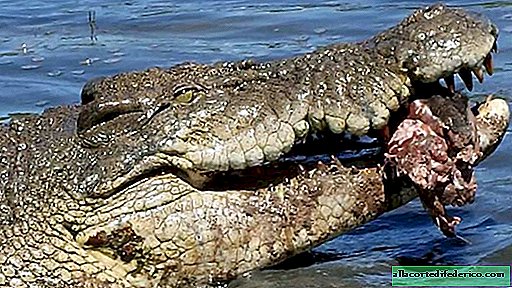
- The deadly danger is the poisonous jellyfish (Chironex and Irukandji), which live in the ocean in the north of the state, starting from the city of Exmouth and to the north. They are especially active from October to April. At this time, it is better to limit yourself to a pool or swim in a wetsuit.
- As for sharks, the probability of an attack on an ordinary bather is very low, most often people who practice spearfishing are attacked.
- When swimming in the ocean, it is necessary to remember the so-called rip currents or rips (rip current). These are streams of water that can carry an unprepared swimmer into the ocean. If you find yourself in such a course, the main thing is to remain calm and not spend energy on unsuccessful attempts to reach land. Usually rips are quite narrow. Therefore, it is necessary to swim for some time parallel to the shore in order to get out of the zone of treacherous flow, and only then turn to land.
- In the north of the state, in the vicinity of the Karijini National Park, asbestos was mined in the mid-20th century. If you are driving through the now deserted town of Wittenoom, it is better to cover the windows of the car. Asbestos dust is known for its carcinogenic effect.
Things to do
Perth and surroundings
- Take a walk in the botanical gardens of one of the world's largest city parks Kings park.
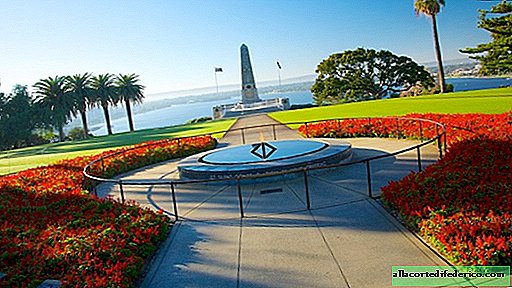
- Pet koala in wildlife parks Caversham wildlife park or Cohunu koala park.
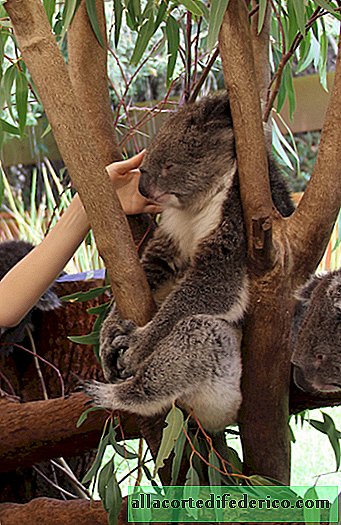
- Explore the historic town Fremantle, with its Victorian architecture, markets, museums and a picturesque harbor.
- Take a selfie with a kvokka on Rottnest Island.

- Sail on a cruise ship along Swan Riveradmiring the black swans, pelicans and the beautiful coastline.

- Have fun in one of the bars Northbridge, Perth's nightlife hub.
Southwest
- Enjoy the region's wine and restaurants Margaret river.
- Hot air balloon flying Avon Valley in the spring flowering season of the bush.
- Try surfing at local beaches.
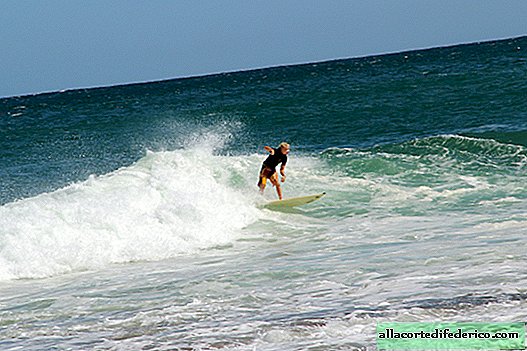
- Walk along the longest pier in the southern hemisphere. Busselton jetty goes to sea for 1.8 km. At the end of the pier there is an underwater observatory.
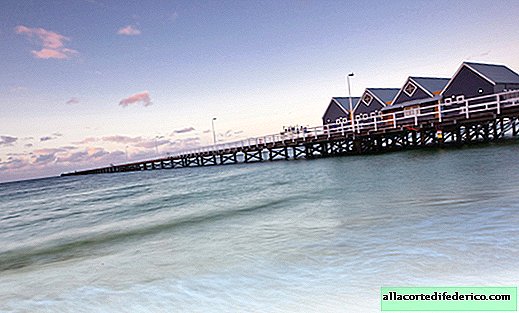
- Visit Australia's tallest lighthouse Cape Leeuwin Lighthouse in Augusta, erected at the meeting place of the Indian and Southern Oceans. The lighthouse is open every day from 8.45 to 17.00.
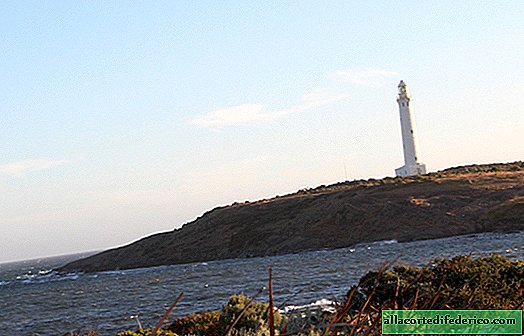
- Climb a giant eucalyptus - 72 meters high Gloucester Treewhich is located in The Gloucester National Park. The steps driven into the trunk lead to the platform at the top, which in the past was used as a fire observation post. Climbing a tree is free.
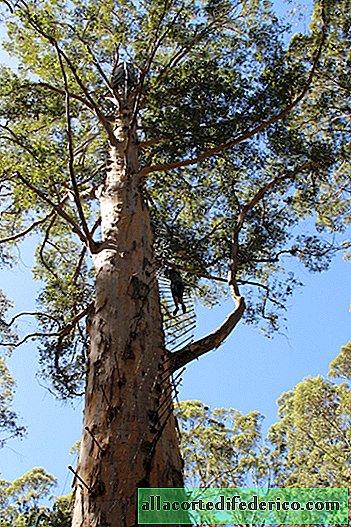
- Go down to one of the largest caves in Australia - Jewel cave at Leeuwin-Naturaliste National Park. A visit is only possible as part of the tour. Tours are conducted daily at 9.30, 10.30, 11.30, 12.30, 13.30, 14.30, 15.30. Adult ticket - 16.6 USD (22.50 AUD), child ticket (from 4 to 16 years old) - 9 USD (12 AUD), family ticket - 44 USD (58 AUD).
Golden Outback
- Get to know the history of gold mining in a mining town Kalgoorlie, notable for its colonial architecture.
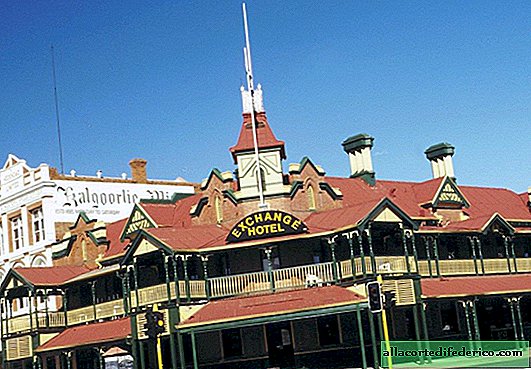
- Play the legendary digger game “Two-Up” , the meaning of which is tossing two coins (traditionally in denominations of 1 penny) and making bets on options for their fall.
- See Australia's largest gold mine Super pit. More than 900,000 ounces of gold are mined here every year. The scale of the mine is best estimated from the observation deck Super pit lookout. Sometimes access to it is limited in connection with blasting operations.
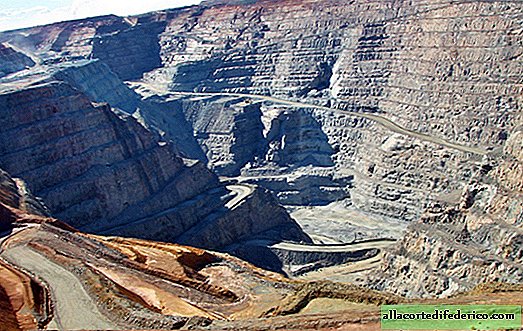
- Take a walk in one of the many ghost towns born during the gold rush and died after the mines were closed (Gwalia, Broad Arrow, Kookynie, Big Bell, etc.).
- Visit the world's largest open-air art gallery. Ten square kilometers of dried salt lake Lake ballard Artist Antony Gormley has placed his original sculptures. This installation looks especially impressive from the top of a neighboring hill.
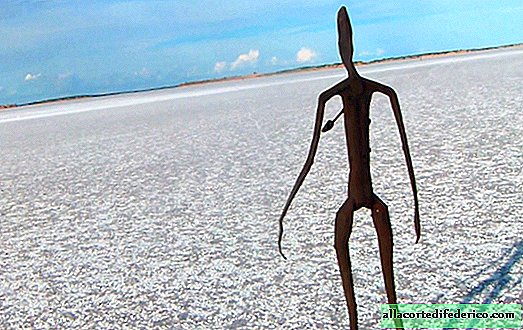
- Play golf on Nullarbor links - The longest golf course in the world, stretching for 1365 km from the city of Kalgoorlie to the city of Ceduna in South Australia.
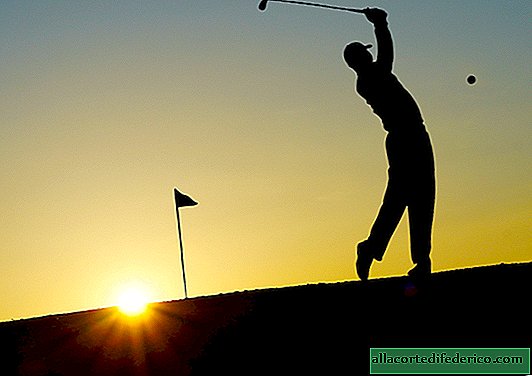
- Surf on a stone wave Wave Rock
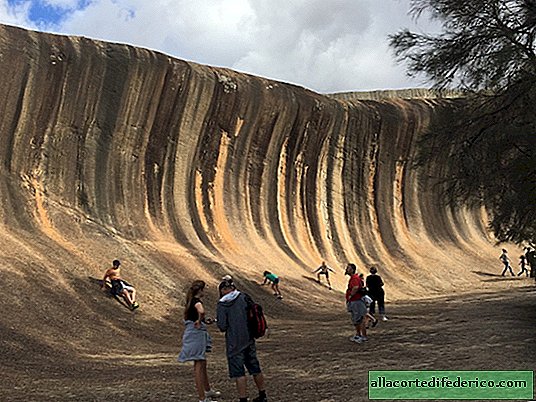
- Meet a kangaroo on a snow-white beach Lucky Bay.
- See billions of stars. When you are outside the cities, Australia's night sky is stunning and makes you feel dizzy. The Milky Way can be seen in detail without any telescope!
Coral coast
- Slide down a snow-white sand dune near the city Lancelin.
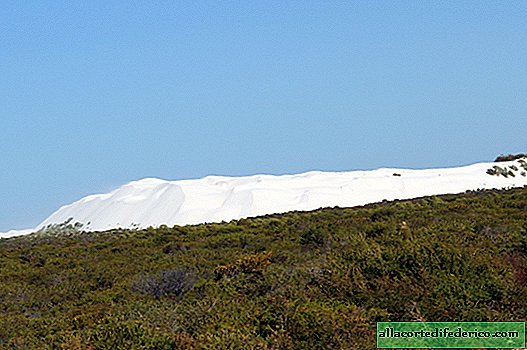
- Evaluate the touching architecture of the memorial complex HMAS Sydney II Memorial, laid in memory of the warship HMAS SYDNEY II, who died in the battle with the German cruiser Kormoran in coastal waters.

- To see the oldest of the life forms existing on earth - stromatolites in Hamelin Pool, Shark Bay World Heritage Area. The age of these organisms dates back to 3,500 million years.
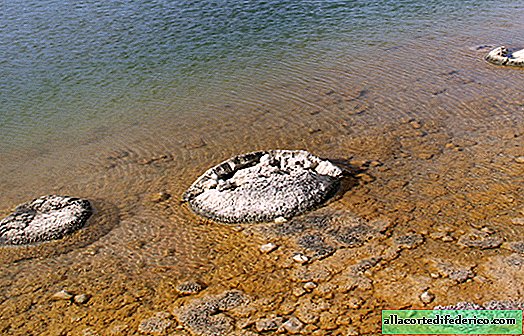
- Find out the names of friendly dolphins in Monkey mia and, with luck, feed them. Daily, rangers randomly select a few people who are entrusted with the morning feeding of dolphins. By the way, touching dolphins with your hands is strictly prohibited and is punishable by a fine.
- Meet the sunrise or sunset in the desert The pinnacles and feel yourself on another planet for a couple of minutes.
- Visit the pink lake Hutt lagoon near the city of Geraldton. The color of the lake is not constant, the color intensity changes, but let's hope you are lucky!
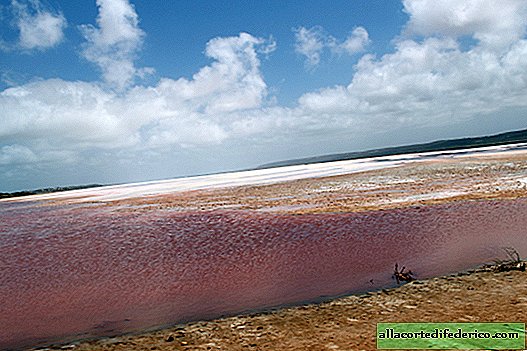
- Swim with whale sharks on the reef. Ningaloo.

Northwest
- Get to know some of the oldest cave paintings of the world “The Gyorn Gyorn Paintings”In Kimberly. Scientists claim that they were created more than 60 thousand years ago. There are many drawings and they are scattered over a large territory, which is especially interesting to visit as part of an excursion group with a guide from the local indigenous population.
- See an interesting optical illusion: Moon Staircase (Staircase to the Moon).
 The full moon is reflected in the sea water, and it seems as if flickering steps lead into the sky from the ocean. This phenomenon can be observed from March to October at various points along the coast of Pilbara and Kimberley, the exact time and place is better to specify in advance on this site.
The full moon is reflected in the sea water, and it seems as if flickering steps lead into the sky from the ocean. This phenomenon can be observed from March to October at various points along the coast of Pilbara and Kimberley, the exact time and place is better to specify in advance on this site. - If you watched the movie "Red Dog", you will be interested in stopping by the town Dampier, where there is a monument to the red kelpie - the pilgrim Pilbara, the prototype of the dog from the film.
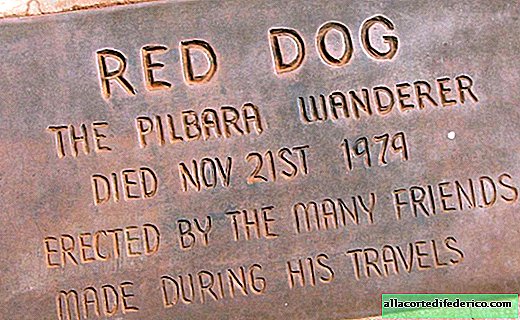
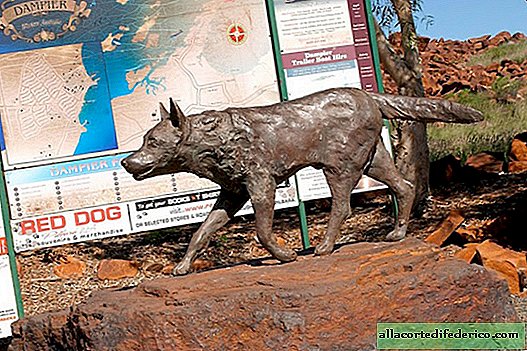
- To visit Wolfe creek crater - the second largest meteorite crater in the world, 150 km south of the city of Halls Creek. The diameter of the crater is about 800 meters and the depth is 60 meters. Descent inside is prohibited, tourists are only allowed to walk around the edge. You can get there only in the dry season.
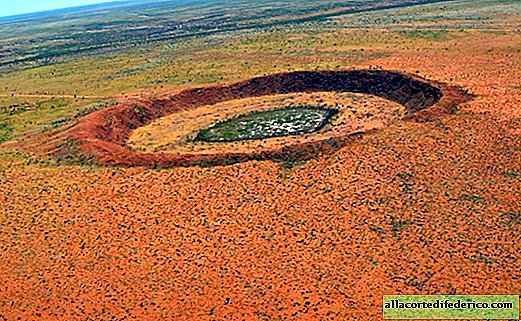
- Take a walk along the underground river bed Tunnel creekpopulated by bats in a national park Tunnel Creek National Park. This is the oldest cave system in Western Australia. Do not forget to bring a flashlight with you!
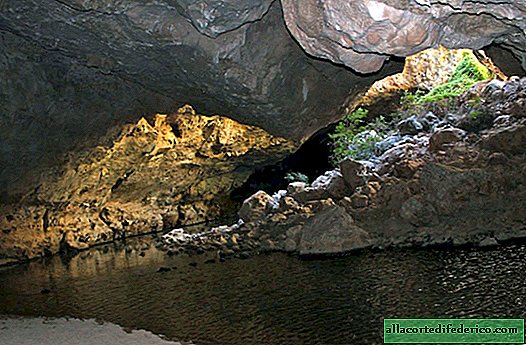
- Swim in the lake with crocodiles. Lake argyle - The second largest among man-made lakes in Australia.
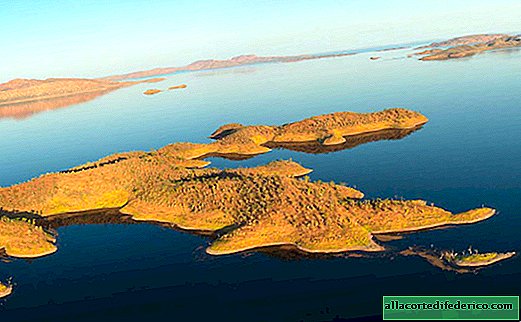 This is home to over 35,000 Australian narrow-crocodile crocodiles. They are relatively small (2-3 meters) and do not prey on humans. However, getting close to them, let alone feeding them, is strictly prohibited!
This is home to over 35,000 Australian narrow-crocodile crocodiles. They are relatively small (2-3 meters) and do not prey on humans. However, getting close to them, let alone feeding them, is strictly prohibited! - Go diving on coral reefs Rowley shoals. The journey by ship from Broome will take about 12 hours, but the pleasure is worth it. The wealth of the underwater world of this heavenly place will amaze even sophisticated divers.
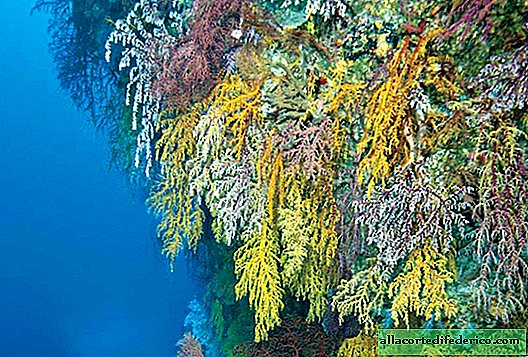
- Go on an excursion to the world's largest diamond mine Argyle (Argyle diamond mine), unique deep pink diamonds are mined here.
- If you are interested in pearls, visit the pearl farm The willie creek pearl farm 38 kilometers from Broome.

- Adventurers advise to conquer the legendary Gibb River Road. This 660-kilometer dirt road in the heart of the Kimberley region requires a reliable all-wheel drive car. On the way you will meet beautiful landscapes, gorges and rivers. And also a lot of crocodiles - be careful!
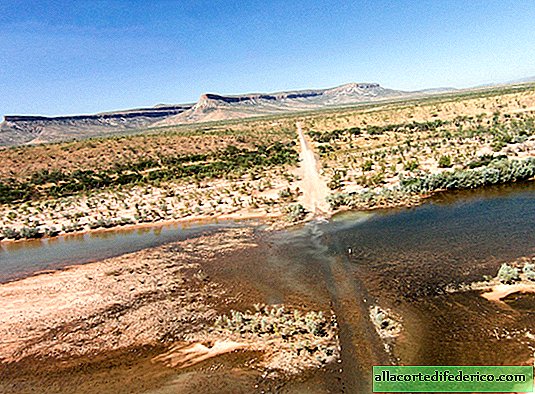
Shopping & Stores
Most stores close quite early at 5 p.m. and are closed on Sundays. Shopping is best in the state capital - Perth, there are quite a lot of shops and several shopping centers. Although, Perth, of course, is far from the title of the capital of world shopping ...
Bars
There are bars or pubs in every community in the state. The greatest concentration of them, of course, in Perth. Many bars in Margaret River, Albany, Broome. Most pubs also offer food, but the kitchen usually closes much earlier than the pub itself. In Perth, bars are usually open until 12.00 - 1.00. A mug of beer will cost 6-7.5 USD (8-10 AUD).
Clubs and nightlife
They don’t go to Western Australia for nightlife and clubs. Here is a different style of relaxation. Relatively many places for nightlife lovers are only in Perth. In most small towns, evening entertainment will be limited to going to the nearest pub.
Extreme sports
Western Australia provides many opportunities for extreme sports lovers:
- The state is famous for excellent surfing. This sport can be practiced on many beaches of Perth (Cottesloe Beach, Scarborough Beach, Strickland Bay, Trigg Beach, etc.). A surfing lesson for beginners will cost 22 - 45 USD (30 - 60 AUD). For experienced surfers, the Margaret River region with its huge waves (Surfer's Point, The Box, Smiths Beach, North Point) is suitable. Good surfing and along the entire Coral Coast.
- Other popular sports include kitesurfing and windsurfing. In Perth, kitesurfing is suitable for Leighton Beach, Pinnaroo Point, Scarborough Beach, Mullaloo Beach, Pelican Point (Swan River).
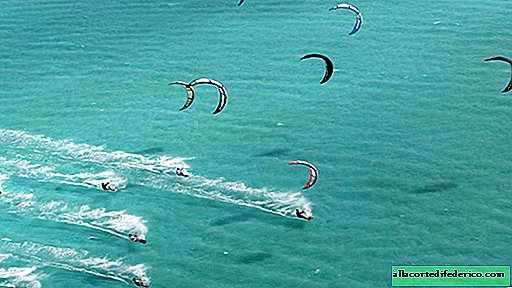 The capital of windsurfing in Western Australia is Geraldton (Coronation Beach).
The capital of windsurfing in Western Australia is Geraldton (Coronation Beach). - On the sand dunes near the city of Lancelin you can do sandboarding - gliding over the sand on the board.
- Extremely popular in Western Australia are diving and snorkeling, which can be enjoyed on the islands and coral reefs of the coast.
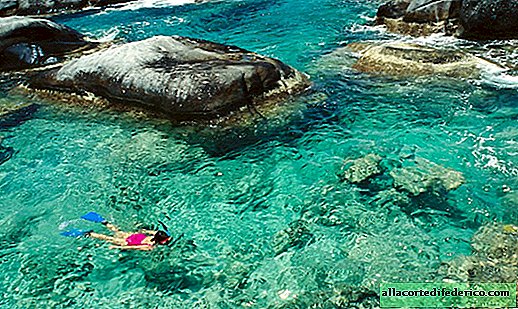 The cost of a diving lesson, including equipment rental, is 105-115 USD (140-150 AUD).
The cost of a diving lesson, including equipment rental, is 105-115 USD (140-150 AUD). - Other extreme entertainment - jeeping, off-road trips. Fortunately, there are plenty of fascinating routes.
- State National Parks provide excellent conditions for hiking and climbing.
- Fans of extreme sports will be interested in skydiving. Flight over the coast will cost 190-415 USD (250-550 AUD).
Souvenirs. What to bring as a gift
A fine gift from the bowels of the Australian land will be gold jewelry with local opals, the north of the state is famous for pearls and pink diamonds. The price range for jewelry is huge (from a couple of hundreds to hundreds of thousands of dollars) and depends on the quality of the material and art of the artist.
Another memorable souvenir is Aboriginal art or at least a good quality copy, as well as boomerangs and didgeridou (a traditional Aboriginal musical instrument). A small souvenir with traditional paintings can be purchased for 20 - 25 AUD. Of course, there are much cheaper Chinese counterparts.
A good gift would be local wine and cheeses. Also, I always bring Australian cosmetics, which is quite comparable in price to international brands popular in Russia.
How to get around the region
It is most convenient to move around the state in a rented car. Due to the large distances and low population density, public transport outside cities is not well developed. Travels on campervan - motorhomes are very popular. 
It is convenient and comfortable, but not always economical due to the high consumption of gasoline.
Another popular travel option is to join one of the many tourist groups.
A train
TransWA serves the following railway lines, each of which has its own name:
- Prospector, connects eastern Perth and Kalgoorlie.
- Australind, connects Perth and Bunbury.
- Avonlink, will deliver from Midland to Northam
- MerredinLink, goes from East Perth to Merredin.
The schedule, route map and ticket price can be found on the official website.
Bus
TransWA and South West Coach Lines offer a network of intercity buses serving the southern half of the state. For tourists, flights to Esperance, Albany, Pemberton, Augusta, Margaret River, Bunbury, Geraldton, Kalbarri can be useful. The Integrity Coach Lines route network spans an even larger area. From Perth you can even get to Broome, but the duration (more than 35 hours) and the price of such a trip are 230-300 USD (300-400 AUD), calling into question its expediency. In the north of the state, the Greyhound Australia bus company connects Broome and neighboring cities all the way to Darwin (Northern Territory).
Airplane
Due to the large distances, you should not discount the option of air travel. REX Airlines flies from Perth to Albany and Esperance. The return ticket price is subject to purchase in advance from 197 USD (260 AUD) .Qantas and Virgin Australia operate flights from Perth to Kalgoorlie. From 190 USD (250 AUD). Qantas and Virgin Australia will deliver you to Broome from Perth. About 380 USD (500 AUD). The same airlines connect Carrata and Perth. From 340 USD (450 AUD) .Kununarra can be reached from Perth (Qantas, AirNorth, Virgin Australia) and Broome (AirNorth). Round-trip tickets from Perth from 680 USD (900 AUD), from Broome from 300 USD (400 AUD).
Vehicle rental
In Western Australia, all well-known international car rental companies (Hertz, Avis, Europcar, Budget, Thrifty, etc.), as well as local companies (Bayswater Car Rentals, Myaree Car Hire, NorthSide Car Rental and many others) are represented. You can compare prices from different distributors here.
When choosing a car, please note that in order to access some natural sites you will need an SUV. Read the contract carefully, companies often include a condition on the invalidity of insurance at the exit from the asphalt road. If you are planning a trip on dirt roads, this question is best to clarify in advance.
Many companies allow you to pick up a car at one point and return it at another, but there is an additional cost.
To rent a car you will need an international driver’s license and a credit card. Different companies have different rules regarding the age of the driver, but, as a rule, there is an additional fee for people under 23-25 and over 70 years old.
Renting an economy car will cost 19 - 38 USD (25 -50 AUD) per day. The price of a small campervan (with sleeping places) starts from 38 USD (50 AUD). Off-road vehicles with insurance will cost from 60-75 USD (80-100 AUD). The price of gas in cities is 0.9 - 1.05 USD (1.2 -1.4 AUD), in places remote from civilization, fuel can be 70-80% more expensive. There are no toll roads in Western Australia.
Tips for motorists
- Responsibly to the technical condition of the vehicle. In many places of the state there is no mobile communication, and passing cars are rare.
- In the event of a breakdown, do not leave the car or attempt to walk. Huge distances and aggressive sun make such a walk too dangerous.
- Always have a supply of water, food, and fuel with you. By the way, gas stations on the roads can be at a decent distance from each other, check this in advance.
- When planning your journey on remote, unpaved roads, always notify your estimated time of arrival at your destination.
- Avoid traveling in the countryside at dusk and at night due to the large number of wildlife that can run out onto the track and cause an accident. Believe me, in this situation, a meeting with a kangaroo will not please you at all!
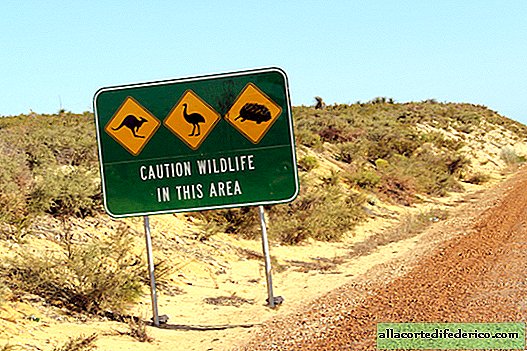
- Pay close attention to official weather alerts and bush fires.
- If you are traveling off-road in the north of the state and crossing small rivers and ponds on your SUV, do not go into the water to check the depth for travel! In such places, crocodiles often hide.
- And of course, do not forget that the movement in Australia is left-hand!
Ski vacation
5 things to do in this region
- Explore the unique wildlife of the country. Friendly rookies await you at Rottnest Island. A colony of dwarf penguins resides on Penguin Island. Kangaroos will be found in abundance when traveling through the countryside and visiting national parks. Also in many places in the state you will see emus, camels and dingoes.
 A safe way to meet combed crocodiles is in the marina of Derby. Argyle Lake is the habitat of their narrow-toed brothers. The coastal waters of the state are home to countless marine life: dolphins, dugongs, sharks (including cetaceans), stingrays, turtles, fish of all colors and sizes ...
A safe way to meet combed crocodiles is in the marina of Derby. Argyle Lake is the habitat of their narrow-toed brothers. The coastal waters of the state are home to countless marine life: dolphins, dugongs, sharks (including cetaceans), stingrays, turtles, fish of all colors and sizes ... 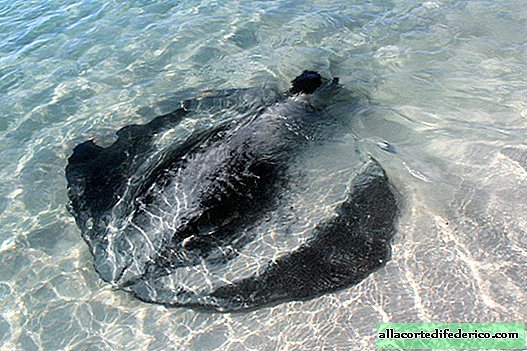 In season, you can see whales. The best time to observe their migration: in the south of the state - from May to September, in the north - from June to November, in the vicinity of Perth - from September to December. And the birds that live in Western Australia, I will not even list.
In season, you can see whales. The best time to observe their migration: in the south of the state - from May to September, in the north - from June to November, in the vicinity of Perth - from September to December. And the birds that live in Western Australia, I will not even list. - Admire the wild flowers. In the local expanses live more than 12 thousand species of flowering plants. Many tourists come here every year to see the Wildflower season, which begins in June in the north and ends in November in the south.
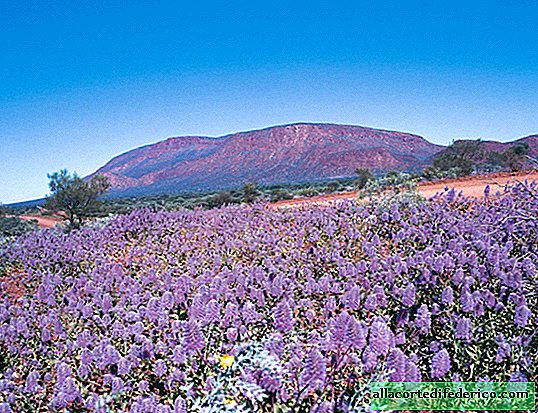
- Feel like a grain of sand in the infinity of time and space. In Western Australia, you realize how ancient this land is. In the town of Gantheaume Point near Broome at low tide you can walk along the giant footprints of dinosaurs that lived here more than 125 million years ago.
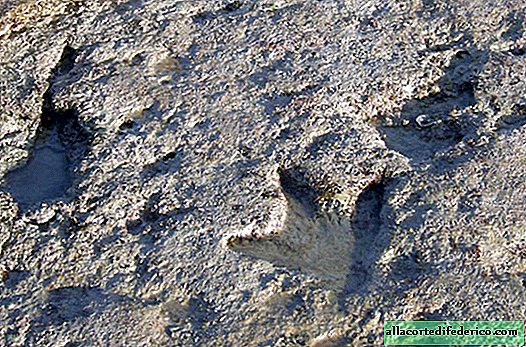 There are traces of prehistoric creatures in other state parks.
There are traces of prehistoric creatures in other state parks. - Soak up the beach. The state is famous for its gorgeous beaches, suitable both for surfing and for a relaxing swim. And you can swim in Western Australia all year round, in the Australian summer in the south, and in the winter in the north.

- Get to know Aboriginal culture. For example, Burrup Peninsula on the Pilbara coast holds over 20,000 cave paintings that are about 40,000 years old.
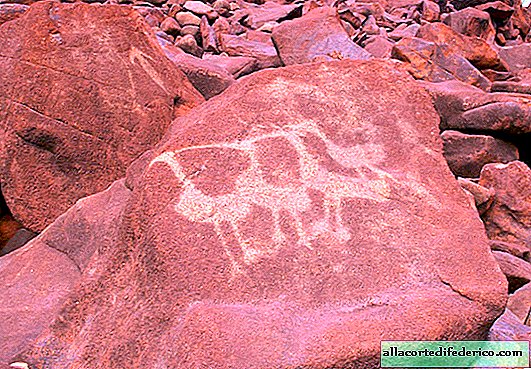




 Its height is 15 meters and its length is 110 meters. This natural wonder came about as a result of weathering and rain erosion of the huge Hyden Rock, which is about 2700 million years old.
Its height is 15 meters and its length is 110 meters. This natural wonder came about as a result of weathering and rain erosion of the huge Hyden Rock, which is about 2700 million years old.  Entering Wave Rock territory costs 7.7 USD (10 AUD) from a car. You can climb a rock, and then it becomes clear that it is only part of a much larger rock formation. There are many hiking trails around Wave Rock: I suggest taking a walk to the fun rock Hippo's Yawn (Hippo Yawn).
Entering Wave Rock territory costs 7.7 USD (10 AUD) from a car. You can climb a rock, and then it becomes clear that it is only part of a much larger rock formation. There are many hiking trails around Wave Rock: I suggest taking a walk to the fun rock Hippo's Yawn (Hippo Yawn).  About 15-20 minutes away, there is also Mulka's Cave, a small cave where you can see Aboriginal rock paintings.
About 15-20 minutes away, there is also Mulka's Cave, a small cave where you can see Aboriginal rock paintings. I will not describe all its countless inhabitants, I will name only the main tourist lure: from April to July you can swim here with the largest fish on earth - the whale shark. It does not pose a danger to humans, as it eats only plankton and small fish.
I will not describe all its countless inhabitants, I will name only the main tourist lure: from April to July you can swim here with the largest fish on earth - the whale shark. It does not pose a danger to humans, as it eats only plankton and small fish.
 The sand here is so small and clean that it makes a funny creak when you walk on it. An amazing feeling ... There are few people, but kangaroos often go to the beach. The beach is wild, there is no tourist infrastructure here. The entrance to the water is shallow and sandy. Swimming here is a pleasure. You can only get by car. The nearest town is Esperance, 62 km away.
The sand here is so small and clean that it makes a funny creak when you walk on it. An amazing feeling ... There are few people, but kangaroos often go to the beach. The beach is wild, there is no tourist infrastructure here. The entrance to the water is shallow and sandy. Swimming here is a pleasure. You can only get by car. The nearest town is Esperance, 62 km away. 

 In addition to crystal water, the beach can offer walks through bizarre cliffs and rock tunnels. Be sure to get to Elephant Rocks, stones that look like a group of elephants refreshing their bodies in the cool water of the bay.
In addition to crystal water, the beach can offer walks through bizarre cliffs and rock tunnels. Be sure to get to Elephant Rocks, stones that look like a group of elephants refreshing their bodies in the cool water of the bay. 

 In the past, before this area received the status of a national park, whole blocks of pressed shells were extracted from the depths of the beach for the construction of buildings in the neighboring town of Denham. This material is called coquina.
In the past, before this area received the status of a national park, whole blocks of pressed shells were extracted from the depths of the beach for the construction of buildings in the neighboring town of Denham. This material is called coquina. The cost of such entertainment is 42-70 USD. And if you don’t like to ride camels (sometimes it happens!) Or just feel sorry for the money, you can absolutely free to watch and photograph people who do not mind doing it. The beach has several excellent bars, a surf club and all the necessary infrastructure.
The cost of such entertainment is 42-70 USD. And if you don’t like to ride camels (sometimes it happens!) Or just feel sorry for the money, you can absolutely free to watch and photograph people who do not mind doing it. The beach has several excellent bars, a surf club and all the necessary infrastructure.



 The climb is not very steep, but comfortable and non-slip shoes are needed. You cannot climb in rainy weather, as the slope becomes too slippery.
The climb is not very steep, but comfortable and non-slip shoes are needed. You cannot climb in rainy weather, as the slope becomes too slippery. Visitors can walk along the paths and admire these ancient giants. Some trees are over four hundred years old! One of the routes is poetically called The Ancient empires walk. If you are tired of raising your head, I recommend Tree top walk - a walk at a height of forty meters above the ground on specially constructed platforms, allowing you to take a closer look at the crowns of trees.
Visitors can walk along the paths and admire these ancient giants. Some trees are over four hundred years old! One of the routes is poetically called The Ancient empires walk. If you are tired of raising your head, I recommend Tree top walk - a walk at a height of forty meters above the ground on specially constructed platforms, allowing you to take a closer look at the crowns of trees.  Opening hours of Tree Top Walk: 9.00 - 17.00, tickets finish selling at 16.15. Adult ticket - 16 USD (21 AUD), child ticket (6-15 years old) - 7.6 USD (10.50 AUD), family ticket (2 adults, 2 children) - 40 USD (52.50 AUD).
Opening hours of Tree Top Walk: 9.00 - 17.00, tickets finish selling at 16.15. Adult ticket - 16 USD (21 AUD), child ticket (6-15 years old) - 7.6 USD (10.50 AUD), family ticket (2 adults, 2 children) - 40 USD (52.50 AUD).
 Going further through the eucalyptus forest and climbing the steps driven into the rock, you will find yourself on Granite skywalk - a walking platform on top of the highest cliff of the park Castle rock.
Going further through the eucalyptus forest and climbing the steps driven into the rock, you will find yourself on Granite skywalk - a walking platform on top of the highest cliff of the park Castle rock. 

 There are many beautiful observation platforms. Perhaps the most popular place is Natures window. This natural window in the rock acts as a wonderful frame for the surrounding landscape. Walking in the park, do not forget to look at your feet. On these ancient rocks there were prints of prehistoric animals!
There are many beautiful observation platforms. Perhaps the most popular place is Natures window. This natural window in the rock acts as a wonderful frame for the surrounding landscape. Walking in the park, do not forget to look at your feet. On these ancient rocks there were prints of prehistoric animals! 
 Such geological formations are called "Inzelberg" - an island mountain. This is the less famous, but no less impressive brother of the famous Uluru. By the way, Mount Augustus even surpasses Ulur in size. According to scientists, Mount Augustus formed 900 million years ago. Please note that the roads in the vicinity of the national park are unpaved. The park is 465 km from the city of Carnarvon, only a section of the road is paved 172 km from Carnarvon to Gascoyne Junction.
Such geological formations are called "Inzelberg" - an island mountain. This is the less famous, but no less impressive brother of the famous Uluru. By the way, Mount Augustus even surpasses Ulur in size. According to scientists, Mount Augustus formed 900 million years ago. Please note that the roads in the vicinity of the national park are unpaved. The park is 465 km from the city of Carnarvon, only a section of the road is paved 172 km from Carnarvon to Gascoyne Junction. According to scientists, the rocks of the park are more than 2 billion years old. This is the original territory of the tribes of Banjima, Innawongka and Eastern Guruma. Visitors can access the northern part of the park, there are many hiking trails. One of the best viewing platforms - Oxer lookout. In the territory of the park is the highest mountain in Western Australia - Mount meharry (1,249 meters).
According to scientists, the rocks of the park are more than 2 billion years old. This is the original territory of the tribes of Banjima, Innawongka and Eastern Guruma. Visitors can access the northern part of the park, there are many hiking trails. One of the best viewing platforms - Oxer lookout. In the territory of the park is the highest mountain in Western Australia - Mount meharry (1,249 meters).
 Scientists suggest that its color is caused by special bacteria living in salt water. The lake does not change color all year round. You can admire this beauty from the air by booking a flight at Esperance Air Services.
Scientists suggest that its color is caused by special bacteria living in salt water. The lake does not change color all year round. You can admire this beauty from the air by booking a flight at Esperance Air Services. In addition to coral underwater, there are debris of wrecked ships. At this place the legendary shipwreck of the Dutch ship "Batavia". You can explore the islands by joining the day tours from the city of Geraldton. Tourists are not allowed to spend the night on the islands.
In addition to coral underwater, there are debris of wrecked ships. At this place the legendary shipwreck of the Dutch ship "Batavia". You can explore the islands by joining the day tours from the city of Geraldton. Tourists are not allowed to spend the night on the islands. In other months, accommodation is prohibited due to the nesting season of turtles. A sad page in history: tests of British atomic weapons in 1952 and 1956 on the islands of Hermite (there was a command post), Trimouille and Alpha. Since that time, nature has healed wounds and the level of radiation has returned to almost normal values. However, it is not recommended to stay in the test areas to be marked for more than 1 hour a day, touch the ground and, especially, grab any items as souvenirs.
In other months, accommodation is prohibited due to the nesting season of turtles. A sad page in history: tests of British atomic weapons in 1952 and 1956 on the islands of Hermite (there was a command post), Trimouille and Alpha. Since that time, nature has healed wounds and the level of radiation has returned to almost normal values. However, it is not recommended to stay in the test areas to be marked for more than 1 hour a day, touch the ground and, especially, grab any items as souvenirs. In fact, these are tidal waves that, under great pressure, pass through the narrow crevices in the Mc'Larty Range mountain range, forming seething waterfalls up to 10 meters high. At low tide, the same thing happens, just the direction of the waterfalls changes. It is best to observe this natural wonder from the air. Air tours are organized in the cities of Broome and Derby.
In fact, these are tidal waves that, under great pressure, pass through the narrow crevices in the Mc'Larty Range mountain range, forming seething waterfalls up to 10 meters high. At low tide, the same thing happens, just the direction of the waterfalls changes. It is best to observe this natural wonder from the air. Air tours are organized in the cities of Broome and Derby.


















 The full moon is reflected in the sea water, and it seems as if flickering steps lead into the sky from the ocean. This phenomenon can be observed from March to October at various points along the coast of Pilbara and Kimberley, the exact time and place is better to specify in advance on this site.
The full moon is reflected in the sea water, and it seems as if flickering steps lead into the sky from the ocean. This phenomenon can be observed from March to October at various points along the coast of Pilbara and Kimberley, the exact time and place is better to specify in advance on this site.



 This is home to over 35,000 Australian narrow-crocodile crocodiles. They are relatively small (2-3 meters) and do not prey on humans. However, getting close to them, let alone feeding them, is strictly prohibited!
This is home to over 35,000 Australian narrow-crocodile crocodiles. They are relatively small (2-3 meters) and do not prey on humans. However, getting close to them, let alone feeding them, is strictly prohibited!


 The capital of windsurfing in Western Australia is Geraldton (Coronation Beach).
The capital of windsurfing in Western Australia is Geraldton (Coronation Beach). The cost of a diving lesson, including equipment rental, is 105-115 USD (140-150 AUD).
The cost of a diving lesson, including equipment rental, is 105-115 USD (140-150 AUD).
 A safe way to meet combed crocodiles is in the marina of Derby. Argyle Lake is the habitat of their narrow-toed brothers. The coastal waters of the state are home to countless marine life: dolphins, dugongs, sharks (including cetaceans), stingrays, turtles, fish of all colors and sizes ...
A safe way to meet combed crocodiles is in the marina of Derby. Argyle Lake is the habitat of their narrow-toed brothers. The coastal waters of the state are home to countless marine life: dolphins, dugongs, sharks (including cetaceans), stingrays, turtles, fish of all colors and sizes ...  In season, you can see whales. The best time to observe their migration: in the south of the state - from May to September, in the north - from June to November, in the vicinity of Perth - from September to December. And the birds that live in Western Australia, I will not even list.
In season, you can see whales. The best time to observe their migration: in the south of the state - from May to September, in the north - from June to November, in the vicinity of Perth - from September to December. And the birds that live in Western Australia, I will not even list.
 There are traces of prehistoric creatures in other state parks.
There are traces of prehistoric creatures in other state parks.

